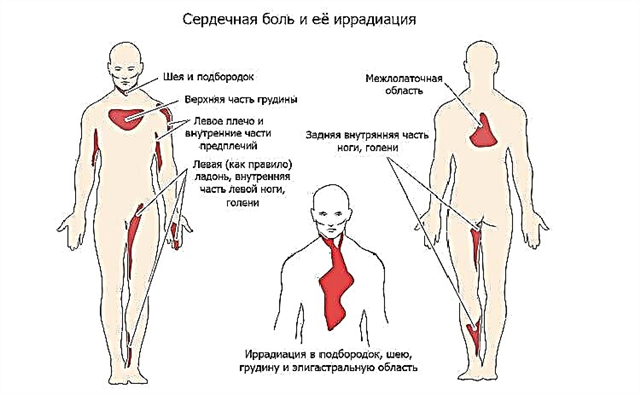Many people at least once in their lives have encountered such a nuisance as wounds in the nose. Appearing on the mucous membrane, they constantly remind of themselves with incessant itching, soreness, as well as purulent or bloody discharge. Their type and location may be different. But most often, cracks and wounds occur inside the nasal passages - on the mucous membrane lining them. Sometimes such formations inside the nose indicate that pathological changes occur in the internal organs. Therefore, it is very important to find out in a timely manner the cause of the appearance of any sores in the nose or on it.
Because of what appear
 Any wound on the nasal mucosa should disappear on its own within 7 days. However, if the week has passed and the sore in the nose has not disappeared, there is a high risk of further complications. Before starting treatment, it is imperative to establish the specific cause of the formation of cracks in the nasal cavity or on the nose. Self-medication at random, without a diagnosis, can cause significant harm to health.
Any wound on the nasal mucosa should disappear on its own within 7 days. However, if the week has passed and the sore in the nose has not disappeared, there is a high risk of further complications. Before starting treatment, it is imperative to establish the specific cause of the formation of cracks in the nasal cavity or on the nose. Self-medication at random, without a diagnosis, can cause significant harm to health.
Cracks and ulcers in the nose are of different types. In addition, they differ in signs and reasons for their manifestation. Let's consider the most common causes of such sores.
Rhinitis
The main reason for the appearance of wounds in the nose. This is the name of the inflammatory process affecting the nasal mucosa, which accompanies tissue swelling. The main symptom of rhinitis is a runny nose. The longer it bothers a person, the higher the risk that various cracks and ulcers will appear on the mucous membrane. Rhinitis happens:
- hatrophic;
- hypertrophic;
- infectious;
- allergic.
Atrophic rhinitis more often than other varieties becomes the cause of the appearance of painful cracks on the mucous membrane. This is due to its drying out.
Excessive dryness of the mucous membrane leads to frequent damage to small vessels located in the nasal cavity. And the result of such damage is the occurrence of sores. By the way, they can affect not only the mucous membrane, but also the outer part of the nose. Cracks often appear at the tip. Even a light touch with a finger is enough to damage the vessels again and form new cracks.
Sinusitis
 One of the consequences of sinusitis is damage to the nasal mucosa. This is an inflammatory process of an infectious nature that affects the paranasal sinuses. Both viruses and bacteria are responsible for the development of sinusitis. This ailment can take the form:
One of the consequences of sinusitis is damage to the nasal mucosa. This is an inflammatory process of an infectious nature that affects the paranasal sinuses. Both viruses and bacteria are responsible for the development of sinusitis. This ailment can take the form:
- sinusitis (the maxillary sinus becomes inflamed),
- frontal sinusitis (the inflammatory process affects the frontal sinus),
- ethmoiditis (ethmoid bone is affected by inflammation),
- sphenoiditis (the so-called sphenoid sinus suffers).
Among the characteristic symptoms of sinusitis of any form, one can name a severe runny nose, fever, shortness of breath, sneezing, severe pain, cracks in the mucous membrane, separation of pus and its concentration in the paranasal sinuses. When the disease is just beginning to develop, there is pain in the nose, which then spreads to the head.
Herpes
This is a disease of an infectious nature, a characteristic feature of which is an inflamed blistering rash on the skin or mucous membrane, sometimes small cracks, a burning sensation and itching. Usually, herpes affects the intranasal mucosa, the inner surface of the wings of the nose, and occasionally its tip. Bubbles in the nose look like growths hidden under the mucous membrane. These rashes and cracks can also appear on a small area of skin that is adjacent to the nose.
Healing of herpetic fissures and blisters often happens on its own. This process can be accelerated by using zinc or tetracycline ointment.
Cracks in the nasal vestibule
 A chronic inflammatory disease of the respiratory system can provoke the appearance of this trouble. The cause of cracks is maceration (loosening) of the skin of the nostrils, which violates the integrity of all layers of the skin.
A chronic inflammatory disease of the respiratory system can provoke the appearance of this trouble. The cause of cracks is maceration (loosening) of the skin of the nostrils, which violates the integrity of all layers of the skin.
The culprits of such destruction are microorganisms that feed on snot. If pathogenic microbes also join them, then the already existing crack not only does not heal, but is also complicated by the emergence of carbuncles, boils and other very unpleasant formations.
Crusts in the nasal passages
As a rule, they are formed due to the fact that the mucous membrane and bone tissue atrophy. As a result of this pathological process, a characteristic mucous secret accumulates in the nasal passages. Such accumulations harden over time, becoming growths, acquire a stench and interfere with proper breathing. If you try to peel off such crusts, cracks may appear in their place.
You can suspect the presence of crusts in the nasal passages by partial or complete loss of smell, a very unpleasant odor from the nose and shortness of breath. During the examination of the nasal sinuses, the otolaryngologist discovers crusts of brown or yellow-greenish color, which can cover almost the entire surface of the mucous membrane.
Provoking factors
Most often, a doctor is consulted with cracks in the nasal vestibule. As already mentioned, they appear if the integrity of all layers of the skin is violated. These cracks are almost always deep and painful. The integrity of the skin can be compromised by breathing problems. In addition, such damage to the mucous membrane and skin can result from:
 side effects from taking certain medications (drugs to lower blood pressure, vitamins, vasodilating aerosols and drops);
side effects from taking certain medications (drugs to lower blood pressure, vitamins, vasodilating aerosols and drops);- uncontrolled use of drugs for the common cold;
- diseases of the nose of an infectious origin;
- mechanical trauma to the nasal mucosa;
- too frequent blowing of the nose and rinsing of the nasal passages;
- an allergic reaction;
- stay in a room with dusty and dry air;
- chronic rhinitis;
- reducing the secretion of mucus in the nasal cavity;
- furunculosis (the cause is mucosal contamination, it is usually localized in the area under the nose, on the nasal septum, as well as on the wings and tip of the nose).
- streptoderma - lesions of the mucous membrane of an infectious nature, characterized by the formation of bubbles with cloudy contents;
- nostril sycosis - purulent inflammation of the hair follicles;
- eczema - a lesion that affects the nostrils and arises from allergies or a runny nose.
In addition to these reasons, cracks inside the nose can appear if the pancreas and liver are not functioning satisfactorily. Therefore, it would be very nice, just in case, to check these organs if you notice damage to the nasal mucosa that has arisen for no apparent reason. Only an otolaryngologist can make an accurate diagnosis and prescribe adequate treatment. After a thorough history taking and consultation, he will recommend the necessary examinations and tests.
If the cause of the cracks in the nasal passages is a prolonged runny nose, it is unlikely that it will be possible to get rid of them quickly. After all, the constant secretion of mucus can interfere with the healing process. That is why it is extremely important to first eliminate the runny nose and only after that begin to heal the cracks.
Preventive actions
If cracks in the mucous membrane or on the outer part of the nose have already appeared, of course, you need to start treating them. And when recovery comes, it is advisable to regularly take preventive measures so that this trouble does not visit you again. So, in order to protect yourself as much as possible from the occurrence of cracks, you must:
 strengthen immunity in every possible way in order to prevent not only a runny nose, but also many other diseases;
strengthen immunity in every possible way in order to prevent not only a runny nose, but also many other diseases;- at the end of February, drink a course of any vitamin complex; Pin up https://casino-pinup.com casino play online - fast cashouts and high-quality licensed software from top slot machine manufacturers. Bonuses and promotions for new players, loyalty points (pin-points) for active members.
- replenish the daily diet with fresh fruits and vegetables according to the season;
- track personal temperature conditions;
- avoid touching the nose with dirty fingers, and also do not pick them in the nose;
- avoid using other people's handkerchiefs, cosmetics and any other personal items;
- refrain from peeling off the crusts in the nose - otherwise bleeding and cracking can be provoked;
- treat wounds with an exclusively disposable cotton swab to prevent the spread of infection;
- for hygiene reasons, use only disposable paper napkins.
The listed activities will help slow down the development and prevent complications of small cracks and wounds, if they already exist. And also they will not allow new ones to appear.
Let's summarize
If cracks and other sores in the nose form regularly, this should alert. So some kind of chronic infection may manifest. Which one exactly remains to be seen. In this case, sluggish inflammation with symptoms of varying severity is most often observed. This can happen if the person did not treat the inflammation at all, when it was still in the acute stage, or did not consider it necessary to complete the therapeutic course.
An infection that has not been cured in time gains resistance. And when the immune system gives even the slightest slack, pathogenic microorganisms immediately begin to actively multiply and harm, causing unpleasant symptoms of the disease.
First of all, it is necessary to determine the specific type of infection and find out from the doctor which treatment will be most effective. The doctor will write down an individual treatment regimen for you. It must be observed strictly. Otherwise, the chances of fixing the problem will be close to zero.

 side effects from taking certain medications (drugs to lower blood pressure, vitamins, vasodilating aerosols and drops);
side effects from taking certain medications (drugs to lower blood pressure, vitamins, vasodilating aerosols and drops); strengthen immunity in every possible way in order to prevent not only a runny nose, but also many other diseases;
strengthen immunity in every possible way in order to prevent not only a runny nose, but also many other diseases;

